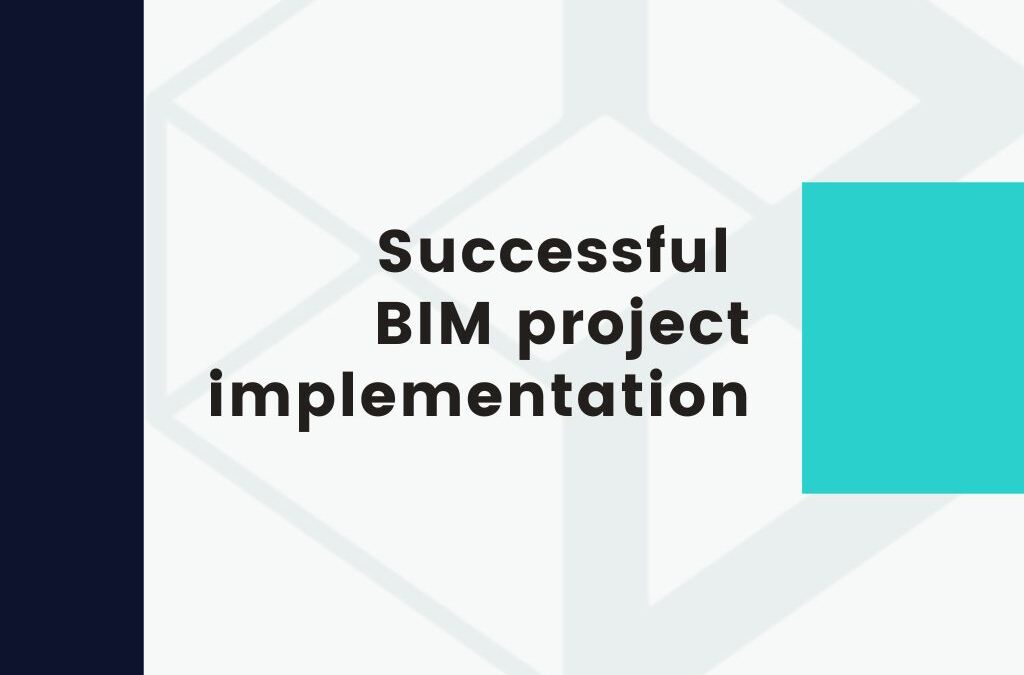
‘As-Built’ model and Moxy Hotel
2021 May 20
Enhancing Quality Assurance and Quality Control in BIM Projects
2023 June 26The use of BIM is no longer surprising, and the technologies of BIM are being used more and more each year. Particularly striking is the progress in the private sector and the increasing use of digital information in all phases of project implementation. A growing number of governments are promoting the wider use of BIM at the national level and introducing the mandatory use of BIM in public projects.
But how to ensure that the implementation of BIM and the use of BIM technologies are consistent, add value, and ensure successful implementation of objectives? How do you achieve efficiency and avoid potential risks? What is important for good BIM results and where should one start?
Theoretical and practical knowledge💡
First of all, we need to understand what BIM is, how the processes on BIM work and how they can help us in our daily tasks. Only with a basic knowledge base can we think about preparing a pilot project in the digital space. BIM is not a tool, instrument or model. BIM is a method for digital project preparation and management that allows you to work more efficiently and effectively with advanced technologies and tools.
To achieve an effective result, clear requirements, a detailed plan and control are necessary. Therefore, basic theoretical knowledge alone is not enough, because the most important thing is the application of BIM in practice and the experience gained.
Employer’s Information Requirements (EIR) 🎯
The methodology of BIM is too extensive to be described in a few sentences. BIM does not allow to abandon traditional procedures and covers all phases of project preparation and implementation. Therefore, in order to achieve a high quality result, the client must provide clearly formulated requirements. When developing information requirements, we need to answer the question of why we need a digital project and what we will use it for during the project lifecycle. In this way, more detailed requirements for the implementation of the digital project emerge, the boundaries of the project team’s responsibilities are defined, and it becomes clear what result the customer expects.
BIM Execution Plan (BEP) 🗓️
A detailed digital project execution plan (BEP) is necessary so that all members of the project team know how the process will be organized to meet all the requirements defined by the client. The BIM methodology does not cover a specific technical or technological process, but all the processes that will be performed during the project execution. Second, the BIM methodology is too comprehensive to be understood equally by all project participants. Therefore, it is necessary to create a detailed plan – what needs to be done, when, how, and by what means to achieve a result that satisfies the customer. A sufficient level of theoretical knowledge is also required.
BIM Manager 🧑💼
Even clearly stated requirements and a detailed process implementation plan are no guarantee that the entire project team will achieve a satisfactory result. There must be a person responsible for BIM (BIM manager or BIM coordinator) who verifies that the work performed complies with the processes described in the BEP document. The BIM methodology is relatively new in our market, so it is important to have an experienced specialist.
Where to start? ✅
- First, determine the level of theoretical and practical knowledge of yourself and the members of the project team. Devote enough time and attention to familiarize yourself with the methodology BIM. Learn from experienced BIM managers and practitioners, get advice from experts ✔️
- Customer requirements (EIR) are the starting point for the whole project team and answer the question of what needs to be prepared and what the final result should be. If you are the owner, you are responsible for providing this document ✔️
- The BIM Execution Plan (BEP) – a detailed description of the process – is required not only for the entire project team, but also for the client. It allows the client to assess early, whether the planned processes are appropriate for the successful execution of the project. As the planner or contractor, you are responsible for preparing this document ✔️
- BIM Manager. If you do not have enough practice, bring in professionals. They will not only ensure the successful execution of the project, but also provide additional knowledge on project digitization issues and advise you on how to behave in non-standard situations related to the presentation and use of digital information at all stages of project implementation ✔️



